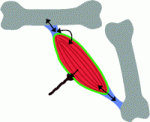Cinematic Highlights at the BSDB Meeting 2011
Posted by Natascha Bushati, on 5 July 2011
As promised, in this final part of my meeting report on the BSCB-BSDB Spring Conference 2011 I will highlight a couple of talks which came with visual effects – studies involving live imaging. I prefer to watch these movies in seminars rather than downloading them with a paper because getting live explanations can make things clearer and more memorable for me. Drosophila was the main movie star, so this post will cover only fly studies.
Lucy Morris, a postdoc in Allan Spradling‘s lab (Carnegie Institution, Baltimore, USA), managed to develop a culture system that keeps the Drosophila germarium (the anterior tip of the ovariole) alive and developing for 14 hours. She used this to follow ovarian follicle generation in real-time: Every 12 hours, a new follicle is generated from a germline stem cell (GSC), which divides and migrates posteriorly, forming a cyst of 16 germline cells. While doing so, the cyst is wrapped by somatic escort cells, which midway through the germarium are replaced by a monolayer of somatic follicle cells. Escort cells have been proposed to arise from an escort stem cell niche at the anterior tip of the germarium and migrate along with the cyst, undergoing apoptosis after being shed. However, in her movies Lucy did not observe high levels of escort cell apoptosis, divisions or net migration! Rather, escort cells stayed still and let germline cysts pass them by using dynamic membrane protrusions to help them along. Lucy also found that escort cells do undergo rare divisions, but do so only to maintain a constant ratio of germ cells to escort cells.
After shedding the escort cells, the cyst is coated by a monolayer of follicle cells, which continue to encase the egg chamber until the egg is formed. This follicular epithelium carries integrins on its basal surface, which connect to the cytoskeleton and thereby mediate follicle cell migration over the extracellular matrix. Nick Brown (Gurdon Institute, Cambridge, UK) and his group imaged the movement and morphology of wild-type and mutant follicle cells to gain insight into the functions of specific integrin-associated proteins during this process. They identified a complex of proteins downstream of integrins that regulates actin stress fibres during a specific time point in development, leading to a sudden switch in the distribution of dynamic actin protrusions and a subsequent stop in migration – an observation that would have been impossible to make using fixed specimens only.
Arno Müller‘s (University of Dundee, UK) lab is interested in the mechanism of mesoderm layer formation and he presented movies in which they monitored the dynamic changes in morphology that the cells undergo during these tissue rearrangements. They found that the mesoderm cells change their migrational behaviour and morphologies during the process, with the consecutive phases having different requirements for the two FGF ligands, Pyramus and Thisbe.
Finally, germ-band extension was featured in more movies from the embryo, presented by Bénédicte Sanson (University of Cambridge, UK). During this process, the embryonic trunk elongates in the antero-posterior axis and narrows dorsal-ventrally. Bénédicte’s lab imaged the surface of wild-type and mutant embryos and automatically tracked cell movements and shapes to explain which cell behaviours lead to the net tissue deformation. These movies provided them with the data to conclude that both cell intercalation and cell shape changes contribute to the deformation in the fast phase of germ-band extension, whereas in the subsequent slower phase only cell intercalations are required. Polarised cell intercalation is directed by antero-posterior patterning, an intrinsic “force”. The changes in cell shape however can be explained by the invaginating mesoderm acting as an extrinsic force. Bénédicte therefore proposed that a balance between these two forces is essential for axis extension.
I learned from these and other talks that if you would like to know how cells behave in a tissue you will have to try to image them. Not only does this frequently result in spectacular movies, it also provides a lot of information in a very short time. Of course the imaging protocol first has to be established, a task that admittedly can present a whole PhD or postdoc project on its own – but more often than not, it seems to be worth the effort.
Morris LX, & Spradling AC (2011). Long-term live imaging provides new insight into stem cell regulation and germline-soma coordination in the Drosophila ovary. Development (Cambridge, England), 138 (11), 2207-15 PMID: 21558370
Clark IB, Muha V, Klingseisen A, Leptin M, & Müller HA (2011). Fibroblast growth factor signalling controls successive cell behaviours during mesoderm layer formation in Drosophila. Development (Cambridge, England), 138 (13), 2705-15 PMID: 21613323
Butler LC, Blanchard GB, Kabla AJ, Lawrence NJ, Welchman DP, Mahadevan L, Adams RJ, & Sanson B (2009). Cell shape changes indicate a role for extrinsic tensile forces in Drosophila germ-band extension. Nature cell biology, 11 (7), 859-64 PMID: 19503074


 (2 votes)
(2 votes) Last week I attended the
Last week I attended the 
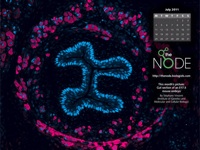

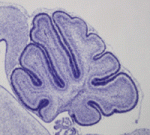
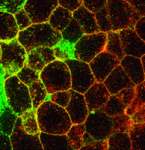
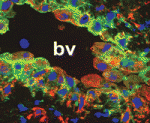
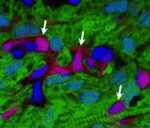
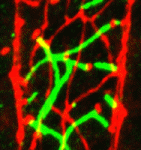
 The stem cell niche: lessons from the Drosophila testis
The stem cell niche: lessons from the Drosophila testis